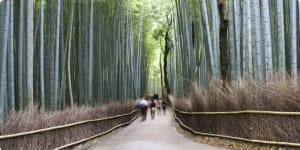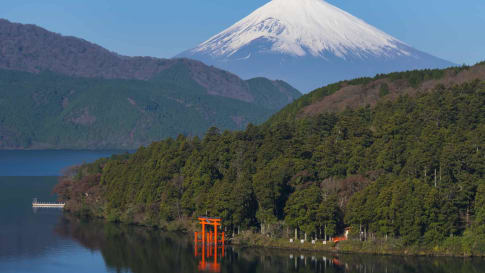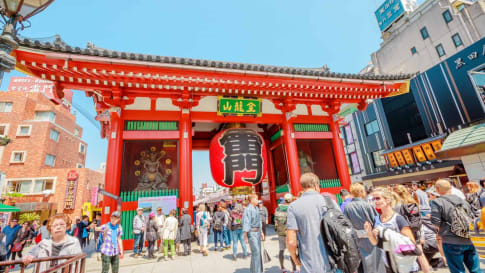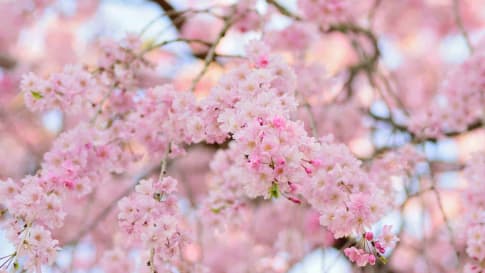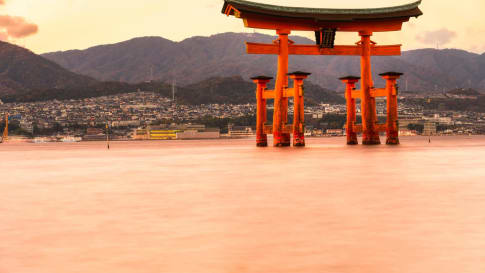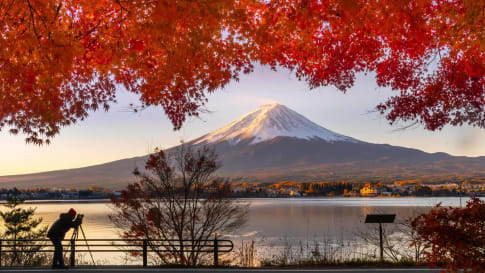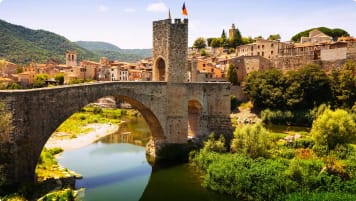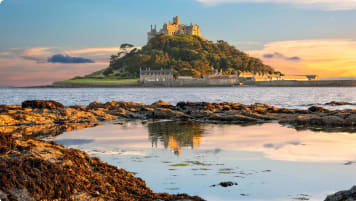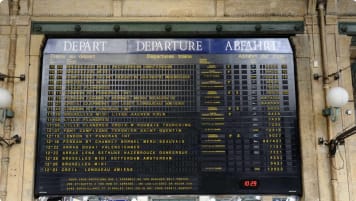Japan History by Rail - Small Group Tour
Explore historic and present day Japan. Journey by rail to regions and great cities to learn about their historical significance.
From A$13,365AUD
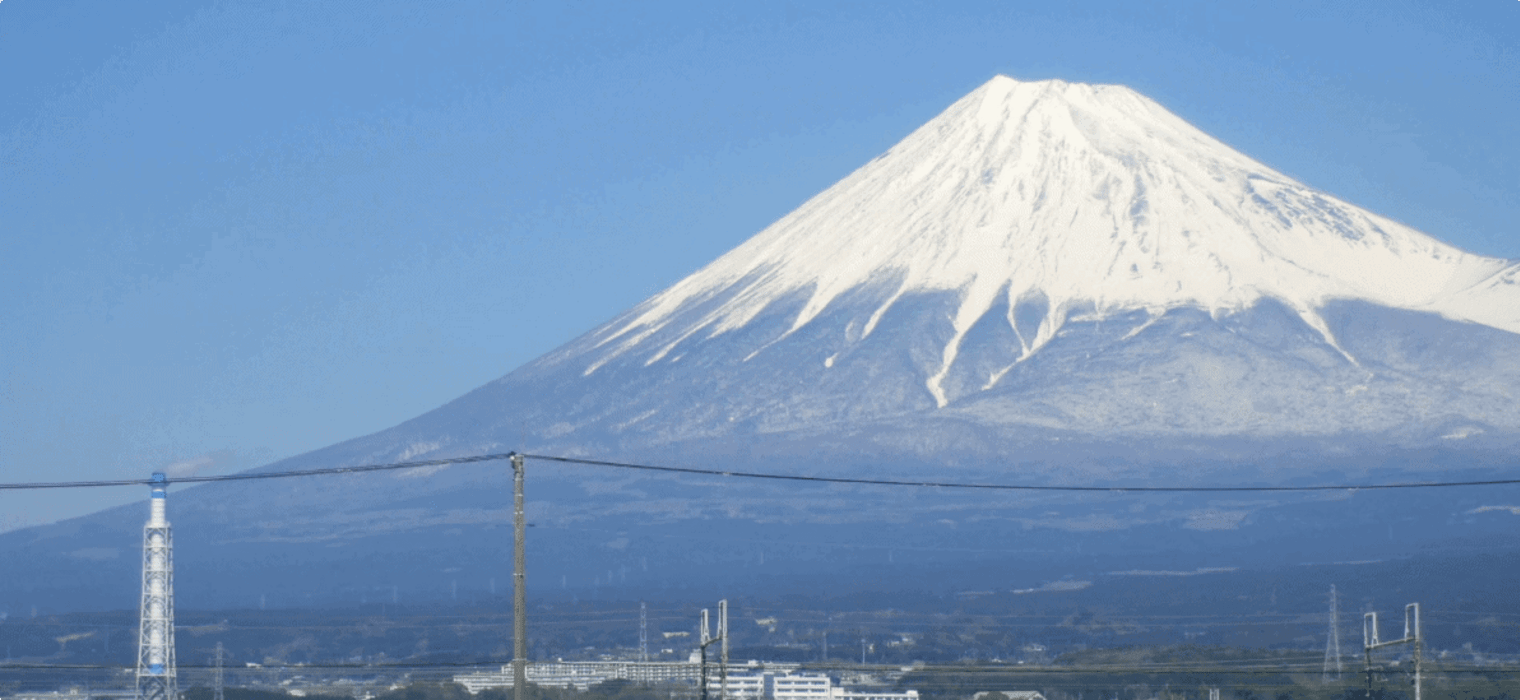
Highlights
- 1. Reflect on the terrible destruction caused by war at the Hiroshima Peace Memorial Dome.
- 2. Experience everyday life as Tokyoites do, from your apartment.
- 3. Explore historic and present day Japan. Journey by rail to regions and great cities to learn about their historical significance.
- 4. Discover the most beautiful Japanese gardens in Tokyo and Kyoto, and learn more about the philosophy they represent.
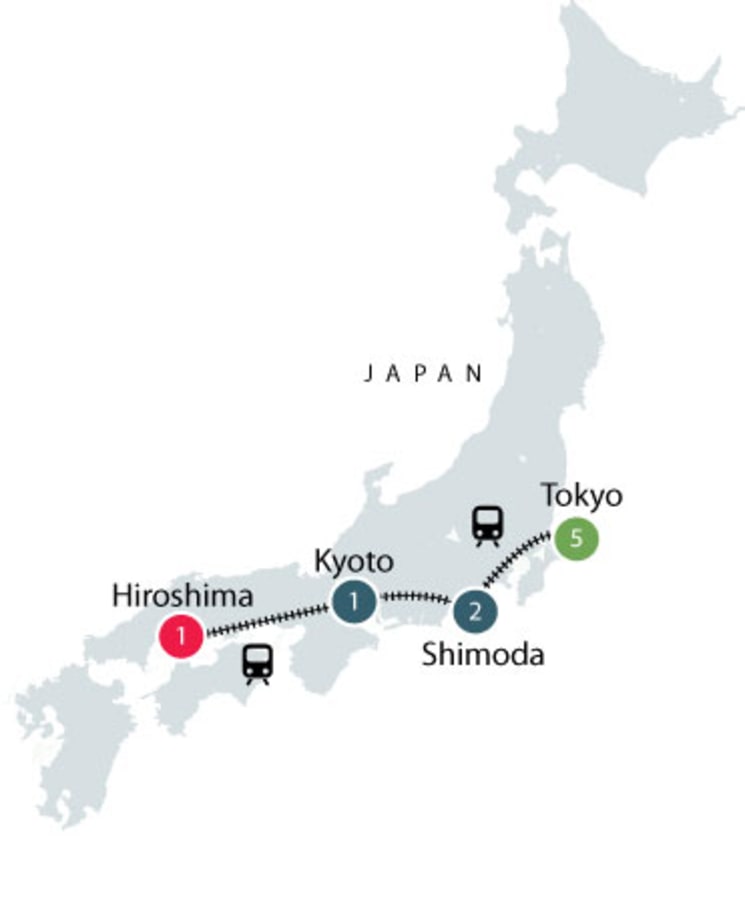
Departure Dates
| Departure Date | Price |
|---|---|
| 01 April 2024 Ends 10 April 2024 • 10 days A$13,365 Twin A$15,675 Single Available | Selected |
| 07 April 2025 Ends 16 April 2025 • 10 days A$13,995 Twin A$16,450 Single Available |
Explore Japan's History by Rail in a small group tour
Odyssey offers easy, convenient, and relaxed escorted small group tours across Japan and beyond. We explore Japan's natural and metropolitan beauty aand Imperial heritage, its World Heritage Sites, and world famous cities, all with some truly spectacular scenery along the way. This and more is all waiting to be explored on one of Odyssey’s small group tours of Japan, designed for the senior traveller, and led by experienced, and enthusiastic like minded people.
Join Odyssey Traveller’s Japan History by Rail small group tour as we cross the country on the world-renowned Japanese railway system to explore several destinations in Japan.
We will travel on the shinkansen—Japan’s high-speed trains or “bullet trains”—an efficient, safe, and comfortable railway system used to travel between Japan’s cities. Japan’s trains depart and arrive to the second, allowing us to maximise our time in the capital.
On this tour, we will stay close to Tokyo’s Shinjuku East area, just minutes from the subway stations. We will visit the Imperial Palace, residence of the Japanese Emperor and Empress, surrounded by a beautiful water-filled moat and tree-covered grounds.
After that brief but precious taste of nature within the bustling metropolitan city, we will visit the breathtaking Mt. Fuji and the Tokyo gardens of Koishikawa Korakuen, which incorporates both Japanese and Chinese design; Shinjuku Gyoen, originally a residence of the feudal lord Naito and his family during the Edo Period; and Hama Rikyu, a traditionally styled garden in the middle of the city.
We will also visit Nikko in the forests northwest of Tokyo, where several generations of shoguns, including Tokugawa Ieyasu, were enshrined; and Shimoda, the port city where Commodore Matthew Perry docked and forcibly opened Japan to Western trade.
We then take the Nozomi Shinkansen for a scenic, 140-minute ride to the ancient imperial capital of Kyoto and Hiroshima, a major urban centre in the 1870s during Japan’s imperial period, and a city destroyed in an instant in August 1945 with the dropping of the atomic bomb during World War II. Hiroshima made an impressive recovery after the war, and is now home to more than two million people.
You can learn more about Japan with our country profile and check out all the other departures. Odyssey Traveller also offers other small group tours by rail:
- French History by Rail tour which goes through Paris and the other cities of France; we have a 21-day tour and a shorter 11-day tour
- You can explore Paris, Bordeaux and Provence by Train in 22 days
- Journey through Mongolia and Russia with the Trans-Siberian Rail in 30 days
- Travel from Helsinki to Irkutsk on the Trans-Siberian Rail or do the reverse tour (Irkutsk to Helsinki)
- Take the Trans-Siberian Rail from Vladivostok to Krasnoyarsk
For more details about this tour, click the ‘Top 5’ or ‘Itinerary’ buttons above! If you’re keen to experience this tour, please call or send an email. Or, to book, simply fill in the form on the right hand side of this page.
Articles about Japan
These articles by Odyssey Traveller or carefully selected external sources are aimed to maximise our senior travellers knowledge and enjoyment of this Japan tour.
- A history of Tokyo
- Shoguns of Japan
- Around the world in six coffees
- Forest bathing in Japan
- Celebrating the Cherry Blossom; Hanami
- Travel tips for travellers to Japan
- Ten of the best books on Japan
- Japan's UNESCO World Heritage sites
- Japan by Marianna Zanetta; travel tips and advice
- Story of Modern Japan; Dr. Christopher Harding
Other Japan Tours with Odyssey Traveller
Each year, Odyssey Traveller offers a number of escorted Japan tours particularly tailored for small groups of active senior travellers. Each has a different focus. Typically, they have an educational theme, providing access to the country’s rich cultural and natural wonders. This link takes you to all Odyssey Travellers small group tours in Asia
Our Contemporary Japan tour will take you through modern life in this East Asian jewel. This contemporary tour is an expedition through Japan’s major urban areas. This 21-day tour begins and ends in Japan’s tantalising capital, Tokyo. For the first 12 days we get our fill of Tokyo fashion, technology, culture, and sights. With Japan’s long history, ancient traditions sit side-by-side with fast-paced urban living, and so we spend time as well in the ancient capital of Kyoto, exploring its gardens and temples. We visit the coastal city of Shimoda and spend a day on the art island of Naoshima.
Our Exploring Japan tour is a journey that will take you from Japan’s imperial city of Kyoto to the neon-lit capital of Tokyo, tracing nearly 2,000 years of history and culture of the Land of the Rising Sun. We will learn about Shintoism and Buddhism, visit temples and other UNESCO-protected World Heritage Sites, admire the country’s natural scenery, and immerse ourselves in Japan’s rich culture.
Our Walking Japan small group tour is perfect for the active, mature traveller, whether travelling solo or as a couple. Beginning in Tokyo and ending in the ancient capital of Kyoto, professional guides ensure access to the extraordinary. This tour journeys around the northeast region of Japan, while following in the footsteps of the famous 17th century poet, Matsuo Basho. Recommended for active travellers, highlights include joining a Japanese prayer service on Mt. Haguru at sunrise, and visits to temples and museums in both urban and rural locations.
All our tours include an English-speaking tour guide to introduce you to the rich heritage of this incredible nation. Odyssey Traveller’s escorted tours of Japan remain very popular, with scheduled departures in the next year. Follow the links above to learn more and see the full itineraries! To read our blog post with tips about travelling in Japan, click here.
Other articles of possible interest is this two-part post filled with travelling tips for seniors, an article on the many nifty gizmos and gadgets you can bring on your trips, and an important article about practicing responsible travel.
Gallery
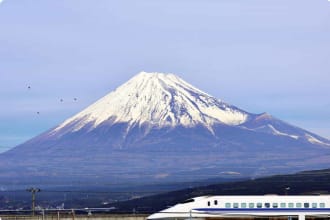
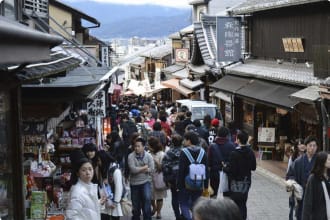
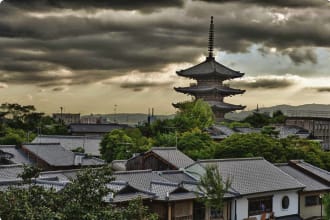
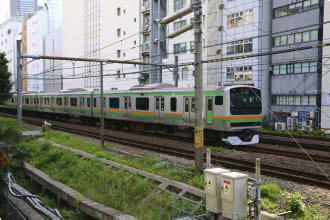
Itinerary
10 days
Day 1: Arrive at Tokyo
Accommodation: 05 nights at Citadines Shinjuku in twin or double apartments or similar
Upon arrival in Tokyo make your own way to our accommodation.
We settle in our apartments and meet in the early evening for a briefing of the trip followed by our welcome dinner at a local restaurant.
We will be based in a Tokyo apartment located in a central district.
(D)
Day 2: Tokyo – Imperial Palace
Accommodation: Citadines Shinjuku in twin or double apartments or similar
Breakfast at your leisure. Please make your own breakfast at your apartments.
In 1603, when Tokugawa Ieyasu became Shogun, Tokyo was to be the seat of national power in Japan. He installed his court in the same location which today is the Imperial Palace. We get a guided tour of the perimater of the imperial compound. On the western side of the moat is today’s Diet and Government area.
The Imperial Palace, where their Majesties the Emperor and Empress reside, is situated in the centre of Tokyo. The palace is surrounded by a water-filled moat and tree-covered grounds – a precious taste of nature within the bustling metropolitan city. Kokyo Gaien (Imperial Palace Outer Garden), Kokyo Higashi Gyoen (Imperial Palace East Garden) and Kita-no-maru-koen Park are all open to the public free of charge.
A popular photo spot is located in front of the beautiful Niju-bashi Bridge that stretches over the moat in the outer gardens near Tokyo Station. In the vast Imperial Palace East Garden stands a stone wall that has been there since the time when the Imperial Palace was known as Edo Castle, a place where samurai warriors lived from the 17th to 19th centuries. A great favourite among tourists is the viewing of the garden’s seasonal flowers, such as azaleas and hydrangeas. In the Sannomaru-Shozo-kan (Museum of the Imperial Collections) where Emperor Hirohito’s art collection is exhibited, you will see beautiful kimonos and Japanese paintings.
Lunch at a local restaurant.
(L)
Day 3: Mt Fuji
Accommodation: Citadines Shinjuku in twin or double apartments or similar
Breakfast at your leisure. Please make your own breakfast at your apartments.
Time to tackle (visually) Mount Fuji, Japan’s iconic Holy Mountain, and the nearby resort of Hakone, in which lake the majestic surrounding landscape is reflected. This has long been a popular playground of the Japanese aristocracy.
Owakudani- Where volcanic fumes still bear a trace of the Hakone Volcano.
Lake Ashi- Created in the crater of the Hakone Volcano.
Lunch at local restaurant.
(L)
Day 4: Tokyo - Gardens (L)
Accommodation: Citadines Shinjuku in twin or double apartments or similar
Breakfast at your leisure. Please make your own breakfast at your apartments.
A specialist guide leads our tour of one of the highest achievements of Japanese culture: its gardens. We visit the ancient garden of Koishikawa Korakuen, Shinjuku Gyoen and Kyu-Hamarikyu-teien, helping us to understand Japanese philosophy.
Koishikawa Korakuen Garden- The construction of this park was started in 1629 by Mr. Yorifusa Mito, the Daimyo (Japanese feudal lord) of Mito Tokugawa family, and was completed by his successor, Mr. Mitsukuni Mito, a very famous Daimyo in the early Edo period. Mitsukuni adopted an opinion of a Chinese scholar and named this garden “Koraku-en” (Koraku means “enjoying afterwards”) after a Chinese teaching of “a governor should worry before people and enjoy after people”. This garden is full of Chinese flavour under the influence of Mitsukuni. Korakuen was appointed as the Special Place of scenic beauty and the Special Historic Site based on the Cultural Properties Protection Law of Japan. All through Japan, there are only seven premises which enjoy double appointments by this Law. They are Kinkakuji, Ginkakuji, Sampo-in of Dogoji all in Kyoto, the trace of Nibo-no-miya in the third line of Heijyokyou left city in Nara, Isukushima shrine in Hiroshima and Hamarikyuu and Korakuen in Tokyo.
Lunch at the garden’s rest area, Kanttokutei. (traditional Japanese lunch)
Shinjuku Gyoen-South of the downtown area around the East Exit is Shinjuku-gyoen National Garden, completed in 1906, it features European gardens designed by a French engineer. This garden park surrounds you in luscious greenery and exudes serenity, completely secluded from the hustle and bustle of metropolitan Tokyo. It is renowned as the best site in the city for viewing flowers and wild birds.
Hamarikyu Garden-Hamarikyu, is a large, attractive landscape garden in central Tokyo. Located alongside Tokyo Bay, Hama Rikyu features seawater ponds which change level with the tides, and a teahouse on an island where visitors can rest and enjoy the scenery. The traditionally styled garden stands in stark contrast to the skyscrapers of the adjacent Shiodome district.
(L)
Day 5: Nikko
Accommodation: Citadines Shinjuku in twin or double apartments or similar
Breakfast at your leisure. Please make your own breakfast at your apartments.
Discovery of the holy site of Nikko, in the forests northwest of Tokyo. The first shrine was established in the 8th century. Several generations of Shoguns were enshrined here, including Tokugawa Ieyasu. We also visit the Imperial Villa where emperor Hiro Hito resided during the firebombing of Tokyo.
Nikko lies at the foot of Mt. Nyoho-san in the western part of Tochigi and it has developed as the temple town of Futara-san-jinja Shrine, Toshogu Shrine and Rin-no-ji Temple. These temples are recognized as a UNESCO world heritage site. There runs the Nikko-Suginamiki-Kaido (Nikko’s Japanese- cedar-lined Road), which is designated as a natural monument. And the city forms a part of the Nikko National Park.
Toshogu Shrine is where the famous Shogun of the Edo Period in the 17th century, Tokugawa Ieyasu, was worshiped after his death. It became as luxurious and elaborate as it looks today when the grandson of Ieyasu, the third Shogun Tokugawa Iemitsu, reconstructed it. The engravings on the Yomei-mon Gate are especially overwhelming, provided with every luxury imaginable and redolent in gorgeous colors. The engravings of the three monkeys in Shinkyu-sha and Nemuri-neko, the sleeping cat, are also well known.
The buildings in Mt. Nikko-san and the forest areas in the surroundings are registered as a World Cultural Heritage site and as a cultural property where nature and buildings are united.
Please note: Nikko is going through an extensive renovation until 2019. The gate is covered by scaffolding, but the shrine with its wealth of buildings and carvings is still worth a vist.
Lunch at local restaurant.
(L)
Day 6: Tokyo - Shimoda
Accommodation: 02 nights at Pasto Elegante Shimoda in twin or double rooms (single room not available, must be twin share), or similar.
Breakfast at your leisure. Please make your own breakfast at your apartments.
We leave early to the far end of the beautiful and mountainous Izu peninsula. Our destination is the small town of Shimoda where in 1854 Commodore Perry forced Japan to open itself to foreign trade, thus ending 250 year of self imposed isolation. The local buddhist temple of Gyokusen-ji was vacated to serve as the first American Consulate in Japan. Overnight in Shimoda
Bento box lunch in bullet train.
Shimoda is known as the port city that an American fleet known as Kurofune, the Black Ships, entered in the 19th century demanding the establishment of trade with Japan, which was then under the national isolation policy that cut off any type of exchange with foreign countries. Located in the city is Ryosen-ji Temple, where the then U.S.
Naval Officer Perry and Daigaku Hayashi, ambassador plenipotentiary, concluded the Treaty of Peace and Amity between the United States and the Empire of Japan (Kanagawa Treaty). A sketch of the treaty signing ceremony remains at the temple.
(L, D)
Day 7: Shimoda
Accommodation: Pasto Elegante Shimoda in twin or double rooms (single room not available, must be twin share), or similar.
We visit the museum dedicated to Okichi Saito, who’s tragic life was the inspiration for the Giacomo Puccini Opera Madam Butterfly. We walk through some paddies where rice cultivation has not much changed since hundreds of years.
(B, D)
Day 8: Shimoda - Kyoto
Accommodation: 01 night at Tazuru in traditional Japanese rooms, or similar.
We take the Nozomi Shinkansen for a 140 minutes ride to the “Western Capital”, Kyoto. We follow our expert to Kiyumisudera and other fabulous ancient temples and gardens. We stay overnight in a traditional Ryokan, a typical old style guesthouse.
Lunch at local restaurant or bento box on bullet train
Kiyomizu Temple- Established in 778, this temple has continuously attracted worshippers from among the populace since the Heian Period as “Kiyomizu-Kannon.” The temple contains buildings from the 15th to 17th centuries, including Jishu – jinja Shrine. The Main Hall (Hondo), built in the “stage” style, is noted for its beautiful background scenery which changes with the four seasons – including the cherry blossoms and greenery of spring, and the leaves of autumn. Built atop a precipice, the main hall, which is a National Treasure, is famous as the “Kiyomizu Stage” – affording a magnificent view of the city below. The temple precincts contain fifteen buildings designated as Important Cultural Properties, including the inner Temple (Okunoin), Amida Buddha Hall (Amidado), and the three-tiered pagoda.
(B, L, D)
Day 9: Kyoto - Hiroshima
Accommodation: 01 night at Oriental Hotel Hiroshima or similar.
In the morning we visit the Imperial Palace where the Emperors resided for centuries until the Imperial restoration in 1869, and the court was moved to Edo, nowadays Tokyo. We have some time to meditate overlooking the Ryoan-ji Zen rock garden.
We board the Shinkansen for a 2 hour ride to Hiroshima
Kyoto Imperial Palace- Gain exclusive access to the former residence of the Emperor of Japan, which oversaw many important functions until the capital was moved to Tokyo in 1869.
Ryoanji- This Zen temple was built in 1450 by Hosokawa Katsumoto, who had taken possession of a villa of Tokudaiji Temple. The karesansui (dry landscape) rock garden (designated as a special place of scenic beauty), which lies on the south side of the Hojo (quarters of the chief priest), is famous as “Tora-no-ko Watashi.” The white sand rectangular garden, surrounded on three sides by an oil earthen wall, measures 25 meters east and west and more than 10 meters north and south. The garden comprises fifteen rocks in five groupings. The name of the artist who created the garden is unknown, though a number of theories exist as to his intent. The garden is famous an expression of symbolism, which reproduces nature.
(B, L, D)
Day 10: Hiroshima
Hiroshima, a name heavy to bear. We are guided through the monuments reminding us the terrible destruction of conflict. Our expert explains why Japan entered the war and how they lost, paying a high price.
Hiroshima Peace Memorial Park
Hiroshima Peace Memorial Park is dedicated to the legacy of Hiroshima as the first city in the world to suffer a nuclear attack, and to the memories of the bomb’s direct and indirect victims (of whom there may have been as many as 140,000).The location of Hiroshima Peace Memorial Park was once the city’s busiest downtown commercial and residential district. The park was built on open field that was created by the explosion. Today there are a number of memorials and monuments, museums, and lecture halls, which draw over a million visitors annually. The purpose of the Peace Memorial Park is to not only memorialize the victims, but also to establish the memory of nuclear horrors and advocate world peace.
Genbaku Dome (A-Bomb Dome)
The A-Bomb Dome is the skeletal ruins of the former Industrial Promotion Hall. It is the building closest to the hypocentre of the nuclear bomb that remained at least partially standing. It was left how it was after the bombing in memory of the casualties. The A-Bomb Dome, to which a sense of sacredness and transcendence has been attributed, is situated in a distant ceremonial view that is visible from the Peace Memorial Park’s central cenotaph. It is an officially designated site of memory for the nation’s and humanity’s collectively shared heritage of catastrophe. The A-Bomb Dome is on the UNESCO World Heritage List.
Peace Memorial Museum
The Hiroshima Peace Memorial Museum is the primary museum in the park dedicated to educating visitors about the bomb. The Museum has exhibits and information covering the build up to war, the role of Hiroshima in the war up to the bombing, and extensive information on the bombing and its effects, along with substantial memorabilia and pictures from the bombing. The building also has views of the Memorial Cenotaph, Peace Flame, and A-Bomb Dome.
Lunch at local restaurant.
Our tour concludes today upon completion of this tour.
(B, L)
Tour Notes
- Itineraries may change if flight schedules, site availability, and other inclusions have to be amended prior to departure
- Group size limited to 16.
Includes / Excludes
What’s included in our Tour
- 9 nights at accommodation
- Meals as specified in the itinerary.
- Transport,and field trips as indicated.
- Applicable entry fees and services of local guides.
- Gratuities and service charges.
- Services of a Tour Leader and translator/guide.
- Detailed preparatory material.
What’s not included in our Tour
- International airfares and taxes.
- Comprehensive international travel insurance.
- Items of a personal nature, such as telephone calls and laundry.
Participants must be able to carry their own luggage, climb and descend stairs, be in good health, mobile and able to participate in 3-5 hours of physical activity per day, the equivalent of walking / hiking up to 8 kilometers per day on uneven ground.
Book now
Make it a private tour
Easing your journey
Crossing international borders with restrictions
The list of requirements to travel internationally has changed and will continue to change for several years. Odyssey is here to assist you in managing your way through these requirements:
For more information see our Crossing international borders with restrictions page.
Book With Confidence
If less than 30 days before your tour starts you are unable to travel as a result of Government travel restrictions, Odyssey Traveller will assist you with a date change, provide you with a credit or process a refund for your booking less any non-recoverable costs.
See Terms and conditions for details.
Peace of Mind Travel
The safety of our travellers, tour leader, local guide and support staff has always been our top priority and with the new guidelines for public health and safety for keeping safe for destinations around the world, we’ve developed our plan to give you peace of mind when travelling with us.
See Peace of Mind Travel for details.
Reading List Download PDF
A Geek in Japan: Discovering the Land of Manga, Anime, Zen, and the Tea Ceremony
Hector Garcia
For every fan of manga, anime, J-pop, or Zen, A Geek in Japan is a hip, smart and concise guide to the land that is their source.
Comprehensive and well informed, it covers a wide array of topics in short articles accompanied by sidebars and numerous photographs, providing a lively digest of the society and culture of Japan. Designed to appeal to the generations of Westerners who grew up on Pokemon, manga and video games, A Geek in Japan reinvents the culture guide for readers in the Internet age.
Spotlighting the originality and creativity of the Japanese, debunking myths about them, and answering nagging questions like why they're so fond of robots, author Hector Garcia has created the perfect book for the growing ranks of Japanophiles in this inspired, insightful and highly informative guide.
Modern Japan: A Very Short Introduction (Very Short Introductions)
Christopher Goto-Jones
Japan is arguably today's most successful industrial economy, combining almost unprecedented affluence with social stability and apparent harmony. Japanese goods and cultural products are consumed all over the world, ranging from animated movies and computer games all the way through to cars, semiconductors, and management techniques. In many ways, Japan is an icon of the modern world, and yet it remains something of an enigma to many, who see it as a confusing
montage of the alien and the familiar, the ancient and modern. The aim of this Very Short Introduction is to explode the myths and explore the reality of modern Japan - by taking a concise look at its history, economy, politics, and culture.
Bending Adversity: Japan and the Art of Survival
David Pilling
A pacy, fresh and surprising portrait of Japan and the Japanese - from David Pilling, award-winning writer and Asia Editor of the Financial Times
Despite years of stagnation, Japan remains one of the world's largest economies and a country which exerts a remarkable cultural fascination. David Pilling's new book is an entertaining, deeply knowledgeable and surprising analysis of a group of islands which have shown great resilience, both in the face of financial distress and when confronted with the overwhelming disaster of the 2011 earthquake.
The resulting tsunami, which killed some 19,000 people, and nuclear catastrophe highlighted both the deeply impressive practical resilience of ordinary Japanese and a political culture of extraordinary carelessness and arrogance. Pilling describes the emergency and its aftermath, but then writes far more broadly about many aspects of Japan which are little known to outsiders and which do so much to explain these contradictory responses to the earthquake. Bending Adversity is a superb work of reportage and the essential book even for those who already feel they know the country well.
For Fukui's Sake: Two years in rural Japan
Sam Baldwin
Far from the high-tech, high-rise of the super-cities, there lies another Japan.
A Japan where snakes slither down school corridors, where bears prowl dark forests and where Westerners are still regarded as curious creatures. Welcome to the world of the inaka – the Japanese countryside.
Unhappily employed in the UK, Sam Baldwin decides to make a big change. Saying sayonara to laboratory life, he takes a job as an English teacher in a small, rural Japanese town that no one – the Japanese included – has ever heard of.
Arriving in Fukui, where there’s ‘little reason to linger’ according to the guidebook, at first he wonders why he left England. But as he slowly settles in to his unfamiliar new home, Sam befriends a colourful cast of locals and begins to discover the secrets of this little known region.
Helped by headmasters, housewives and Himalayan mountain climbers, he immerses himself in a Japan still clutching its pastoral past and uncovers a landscape of lonely lakes, rice fields and lush mountain forests. Joining a master drummer’s taiko class, skiing over paddies and learning how to sharpen samurai swords, along the way Sam encounters farmers, fishermen and foreigners behaving badly.
Exploring Japan’s culture and cuisine, as well as its wild places and wildlife, For Fukui’s Sake is an adventurous, humorous and sometimes poignant insight into the frustrations and fascinations that face an outsider living in small town, backcountry Japan.
A Concise History of Japan (Cambridge Concise Histories)
Brett L. Walker
To this day, Japan's modern ascendancy challenges many assumptions about world history, particularly theories regarding the rise of the west and why the modern world looks the way it does. In this engaging new history, Brett L. Walker tackles key themes regarding Japan's relationships with its minorities, state and economic development, and the uses of science and medicine. The book begins by tracing the country's early history through archaeological remains, before proceeding to explore life in the imperial court, the rise of the samurai, civil conflict, encounters with Europe, and the advent of modernity and empire. Integrating the pageantry of a unique nation's history with today's environmental concerns, Walker's vibrant and accessible new narrative then follows Japan's ascension from the ashes of World War II into the thriving nation of today. It is a history for our times, posing important questions regarding how we should situate a nation's history in an age of environmental and climatological uncertainties.
An Introduction to Japanese Society
Yoshio Sugimoto
Now in its fourth edition, An Introduction to Japanese Society remains essential reading for students of Japanese society. Internationally renowned scholar Yoshio Sugimoto uses both English and Japanese sources to update and expand upon his original narrative in this sophisticated yet highly readable text. This book explores the breadth and diversity of Japanese society, with chapters covering class, geographical and generational variation, work, education, gender, minorities, popular culture and the establishment. Updates include an exploration of the 'Cool Japan' phenomenon and the explosion of Japanese culture overseas. This edition also features the latest research into Japanese society, updated statistical data, and coverage of recent events including the 2011 earthquake and tsunami, and the change in government. Written in a clear and engaging style, An Introduction to Japanese Society provides an insight into all aspects of a diverse and ever-evolving contemporary Japan.
Lost Japan
Alex Kerr
An enchanting and fascinating insight into Japanese landscape, culture, history and future.
Originally written in Japanese, this passionate, vividly personal book draws on the author's experiences in Japan over thirty years. Alex Kerr brings to life the ritualized world of Kabuki, retraces his initiation into Tokyo's boardrooms during the heady Bubble Years, and tells the story of the hidden valley that became his home.
But the book is not just a love letter. Haunted throughout by nostalgia for the Japan of old, Kerr's book is part paean to that great country and culture, part epitaph in the face of contemporary Japan's environmental and cultural destruction.
Winner of Japan's 1994 Shincho Gakugei Literature Prize.
Alex Kerr is an American writer, antiques collector and Japanologist. Lost Japan is his most famous work. He was the first foreigner to be awarded the Shincho Gakugei Literature Prize for the best work of non-fiction published in Japan.
Memoirs of a Geisha
Arthur Golden
A literary sensation and runaway bestseller, this brilliant debut novel tells with seamless authenticity and exquisite lyricism the true confessions of one of Japan's most celebrated geisha.
Speaking to us with the wisdom of age and in a voice at once haunting and startlingly immediate, Nitta Sayuri tells the story of her life as a geisha. It begins in a poor fishing village in 1929, when, as a nine-year-old girl with unusual blue-gray eyes, she is taken from her home and sold into slavery to a renowned geisha house. We witness her transformation as she learns the rigorous arts of the geisha: dance and music; wearing kimono, elaborate makeup, and hair; pouring sake to reveal just a touch of inner wrist; competing with a jealous rival for men's solicitude and the money that goes with it.In Memoirs of a Geisha, we enter a world where appearances are paramount; where a girl's virginity is auctioned to the highest bidder; where women are trained to beguile the most powerful men; and where love is scorned as illusion. It is a unique and triumphant work of fiction—at once romantic, erotic, suspenseful—and completely unforgettable.
The Wind-Up Bird Chronicle
Haruki Murakami
Japan's most highly regarded novelist vaults into the first ranks of international fiction writers with this heroically imaginative novel, which is at once a detective story, an account of a disintegrating marriage, and an excavation of the buried secrets of World War II.
In a Tokyo suburb a young man named Toru Okada searches for his wife's missing cat. Soon he finds himself looking for his wife as well in a netherworld that lies beneath the placid surface of Tokyo. As these searches intersect, Okada encounters a bizarre group of allies and antagonists: a psychic prostitute; a malevolent yet mediagenic politician; a cheerfully morbid sixteen-year-old-girl; and an aging war veteran who has been permanently changed by the hideous things he witnessed during Japan's forgotten campaign in Manchuria.
Gripping, prophetic, suffused with comedy and menace, The Wind-Up Bird Chronicle is a tour de force equal in scope to the masterpieces of Mishima and Pynchon.
